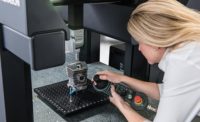Back in the 1980s, it was referred to as sabermetrics. Its name was derived from the acronym for an organization called the Society for American Baseball Research. At its most simple, sabermetrics is applying statistical analysis to individual players as a means of comparison and evaluation. It went beyond calculating batting averages and tracking the number of home runs. So much information on seemingly every variable imaginable was gathered, placed into algorithms and analyzed that sabermetrics boasted the ability to analyze and predict the natural skills of players, such as a statistic called “eye” or “batting eye.”
I’m sure many have experienced a Little League game where a youngster allowed a “ball” to pass by without swinging and a roar of proud parents would yell, “Good eye, Bobby!” It was a simple way of encouraging a young player for good strike zone judgment. With sabermetrics, batting eye, or eye, is defined as walks divided by strikeouts and is “considered to be a good measure of a player’s strike zone judgment.”
Many examples like these abound and sabermetrics, now just referred to as “analytics”, has permeated major league baseball and has evolved, due in large part to the availability and abundance of technology. Collecting the data that drives analytics has never been easier. We have probably all heard of “the gun,” the radar technology that allows everyone in the ballpark and watching on television to know the speed of a pitch a split-second after it has been delivered. Another technology that should be familiar to fans watching on TV is the “strike zone box,” a rectangular box projected on the screen that defines the strike zone and helps the viewer identify balls and strikes. Whether it is accurate or helpful is debatable but shows the progress that could eventually lead to the “robot umpire.”
Back in 2015, Major League Baseball experimented with three camera angles, a monitor, and direct communication with the home plate umpire to determine balls and strikes. This, and the proliferation of sensor technology, has the baseball world wondering if a truly automated strike zone isn’t far away, and has some umpires wondering if they will be out of a job.
As you can imagine, many fans are not particularly happy with this progress. An article titled, “6 Ways Television Is Helping To Make Baseball Unwatchable,” on stuffnobodycaresabout.com, referred to the strike zone box as “This horrible innovation… Unfortunately, it is in the direct line of sight of the television viewer. The worst part about it is you can’t ignore it.” The idea of the robot umpire experiment was likened to fans’ hatred for the NFL’s instant replay. And, although it may be entertaining, many have argued about the legitimacy and use for analytics such as “launch angle” and “exit velocity.”
What we can all be happy about is the existence of analytics in manufacturing. The ability to collect and analyze data for quality control and process improvement is vital. With that in mind, check out “Selecting Software for Data Collection & SPC” and “Auditing in an Electronic Age,” as well as everything else we have to offer in this month’s Quality.
Enjoy and thanks for reading!



